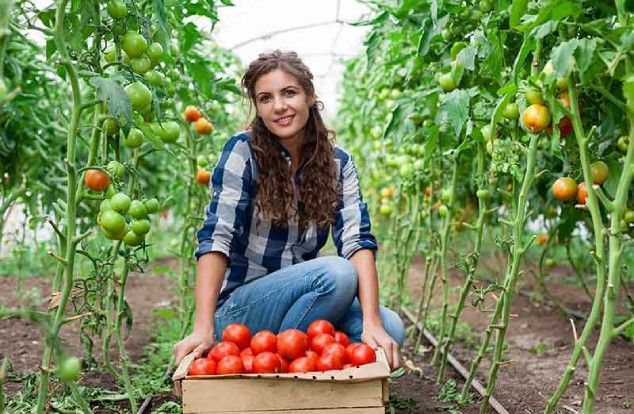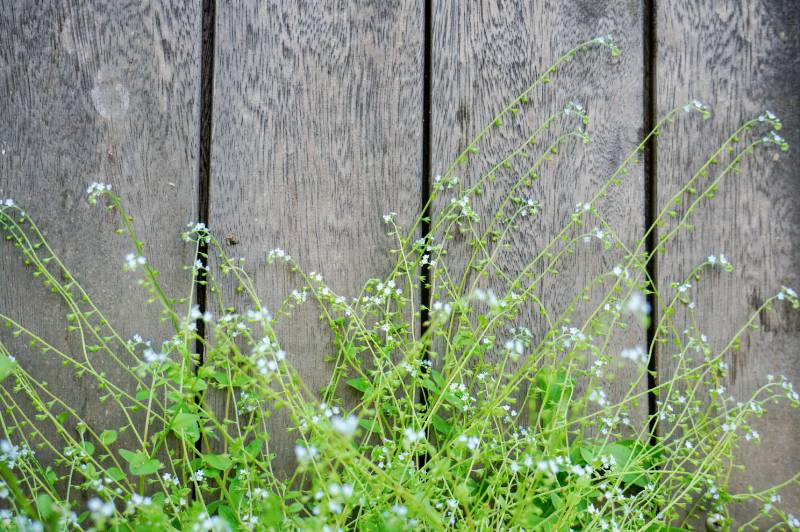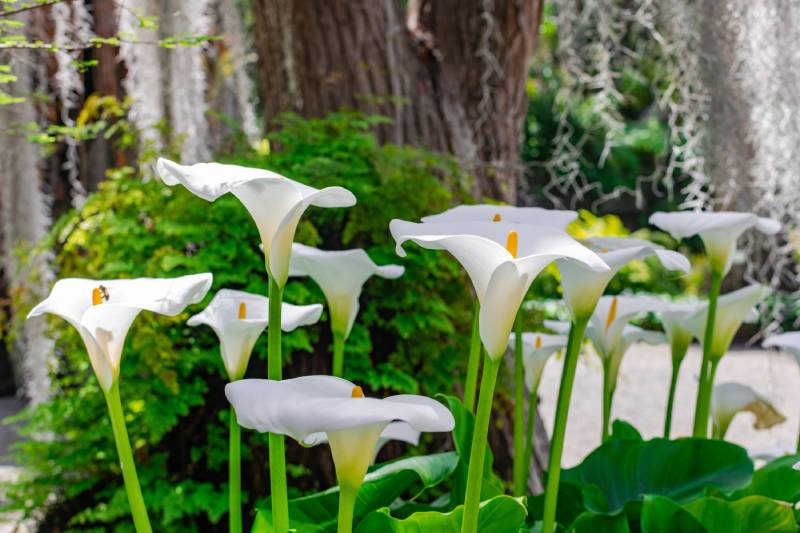7 Outstanding Ways to Grow Harvest Tomatoes

There are few more satisfying feelings than picking your tomatoes straight from the vine and enjoying them in their prime, fully ripened state. Presume you want to learn how to cultivate tomatoes.. In that case, you’ll find the following tomato-growing tips immensely helpful for successfully planning, planting, growing, and harvesting the best possible tomatoes at home! These 7 fantastic ways to plant, grow, and harvest tomatoes will ensure that your tomato-growing efforts pay off in spades!
When to Plant Tomatoes
Tomato plants are long-season, heat-loving plants that won’t tolerate frost. Before planting tomatoes outside in the spring, wait until the weather has warmed up. You can also grow tomatoes indoors six weeks before the last spring frost. If you have a long growing season, you may consider direct-sowing tomatoes in the garden before the soil is at least 55°F. It’s worth noting that 70°F soil is ideal for maximum germination in five days.
1. Select Your Tomato Variety
Before you plant your tomato seeds or plants, consider which variety of tomato you’d like to grow. There are many varieties of tomatoes that grow well in a backyard garden. If you’re growing tomatoes for their fruit rather than as an ornamental plant, choose determinate and compact indeterminate varieties. Determinate varieties don’t get much taller than three feet and produce just one crop of fruit at a time. Compact indeterminate varieties still reach relatively high heights but have small amounts of crops continuously over several months instead of once. And if tomatoes are just an accent or ornament in your garden rather than something you want to eat or cook with, choose cherry tomato plants—they’ll look great in any landscape!
2. Pick The Right Soil
There’s nothing worse than planting a tomato plant and watching it wither and die. Before you buy plants or seeds:
- Take some time to research which soil is best for tomatoes based on your climate and region.
- If you’re going with seedlings rather than plants from a garden center, figure out how soon after planting they should be moved outside and what sort of protection they need in advance.
- Think about your plans for harvesting tomatoes; if you don’t have room for them all in your kitchen at once, grow several smaller varieties to stagger your harvests throughout the season.
3. Grow In Containers
Growing tomatoes in containers offer many benefits: You can plant them closer together (and make better use of space), move them around your garden as needed, and don’t have to worry about rot or pests. While some varieties do fine in pots or planters with minimal care, you should know a few things before planting. For example, you’ll need good soil—you could either purchase potting soil or mix your own using compost and aged animal manure. And grow your tomatoes in full sun for best results.
4. Use Hanging Planters
Hanging planters allow you to grow your plants a few feet off the ground. This means they’re easy to access and easier to maintain. Best of all, you can fit several different types of plants in one hanging planter. Just make sure you turn it somewhere that receives plenty of sunlight and water every day. You should water these planters about once a week—and fertilize your plants about twice a month for optimal health.
5. Water Early and Often
Do not water your tomatoes from overhead. Not only will you wash off some of your fertilizer, but splashing water encourages diseases such as mold and fungi. If you can’t avoid overhead watering – for example, if you have a sprinkler system – make sure you use a soaker hose or drip irrigation system instead of a spray nozzle. It’s also crucial that you water early and often when growing tomatoes, especially when they’re young; their root systems are fragile at first and need consistent moisture to get established. The roots don’t develop on their own – it’s your job as an attentive gardener! When thinking about how much water and what type of watering method is best for your tomatoes, always keep that in mind.
6. Fertilize Correctly
Since tomatoes are heavy feeders, it’s important to fertilize your plants correctly. It’s best not to use chemical fertilizers and instead opt for natural alternatives like compost or worm castings. Many home gardeners swear by a method called sheet composting for growing tomatoes. Here’s how it works: place a 4-inch layer of finished compost over your planting area and top that with a 1-inch layer of hay (preferably organic) or straw and then add soil.
7. Pruning, pinching, staking
Once your tomatoes are growing in your garden or on your balcony and are almost ripe, you’ll want to do a bit of pruning and pinching. Instead of using that energy elsewhere, these techniques help focus all of your plant’s energy into ripening what’s left. Pinching is simple: use clean scissors to snip off any suckers that may have started growing out from where leaves were attached—these suckers steal resources from fruiting growths. Pruning is similar but more intense; it involves cutting back entire branches instead of just unwanted suckers. Staking helps make sure extensions don’t flop over onto other plants or into nearby walkways—but it also makes for better airflow around your plant and reduces its chances of getting waterlogged in heavy rainstorms.
PESTS/DISEASES
Tomato Problems
If you notice that your flowers aren’t spreading, sun and water may be the cause. If plants are producing many flowers with no fruit, inadequate light, too little water, or inconsistent watering may be the culprit. If this is the case, make sure to provide enough sunlight, more water, or more consistency with watering. Low humidity can also affect pollination. The ideal is 40-70% humidity. If the humidity is low, try misting your plants to help the pollen stick.
Tomato pests and diseases
Tomatoes are susceptible to plant-related disorders, including disease and physiological disorders. Most common tomato diseases include Alternaria stem canker, anthracnose, black mold, botrytis gray mold, early blight, fusarium wilt, fusarium crown and root rot.
Pest infestations are common in tomato plants, but they may be avoided by following these simple steps:
– Keep an eye on tomato plants daily, examining beneath leaves, inspecting fruit, and focusing on regions near the soil.
– To get rid of aphids and other pests, spray a strong stream of water on the plants.
– Wearing gloves, handpick bigger pests (such as tomato hornworms) and place them into a pail of soapy water.
– Directly apply insecticidal soap to the plant’s pest. This method is effective against minor pests like aphids and spider mites.
– Use watered-down horticultural oils or sprays. Sprays of neem oil smother insects’ air holes..
-Use pesticides like Sevin sparingly as a last option, as they may also harm beneficial insects.
How to Store Tomatoes
To keep tomatoes from turning rotten, store them in a cool, dark area. You can store them in the crisper section of the fridge or in a container that can hold water. You can also place them in a freezer bag and freeze them for two months.
To prevent the skin from turning brown, you can spray the tomatoes with a solution of water and lemon juice before storing them. Alternatively, you can rub them with a cut lemon or onion.
Conclusion:
There are so many reasons to love the tomato, but we have highlighted just a few of the best practices that have proven successful over time. You can learn more about growing tomatoes from your nearest garden center, or try our self-sufficient method of growing tomatoes organically in your garden.
Tomatoes are a vegetable that you can grow even in small spaces (potted and balcony varieties). They are not fussy about light or water, so expanding your plantings to cover more areas is easy. Enjoy growing delicious, beautiful tomatoes!







Leave a Reply